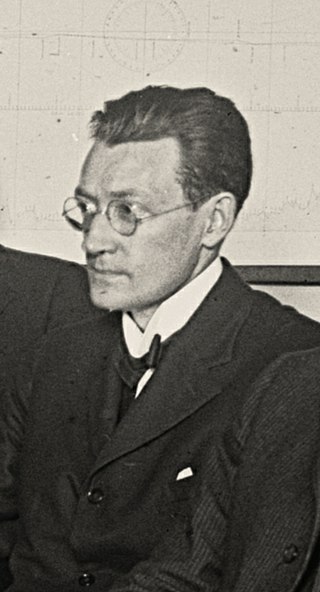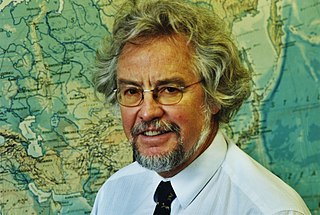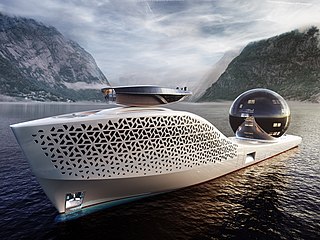Related Research Articles

A ship is a large watercraft that travels the world's oceans and other sufficiently deep waterways, carrying cargo or passengers, or in support of specialized missions, such as defense, research and fishing. Ships are generally distinguished from boats, based on size, shape, load capacity and purpose. Ships have supported exploration, trade, warfare, migration, colonization, and science. After the 15th century, new crops that had come from and to the Americas via the European seafarers significantly contributed to world population growth. Ship transport is responsible for the largest portion of world commerce.

Naval architecture, or naval engineering, is an engineering discipline incorporating elements of mechanical, electrical, electronic, software and safety engineering as applied to the engineering design process, shipbuilding, maintenance, and operation of marine vessels and structures. Naval architecture involves basic and applied research, design, development, design evaluation (classification) and calculations during all stages of the life of a marine vehicle. Preliminary design of the vessel, its detailed design, construction, trials, operation and maintenance, launching and dry-docking are the main activities involved. Ship design calculations are also required for ships being modified. Naval architecture also involves formulation of safety regulations and damage-control rules and the approval and certification of ship designs to meet statutory and non-statutory requirements.

École Centrale de Nantes, or Centrale Nantes, is a grande école - a French engineering school - established in 1919 under the name of Institut Polytechnique de l'Ouest. It delivers Graduate, Master, and PhD Programmes based on the latest scientific and technological developments and the best management practices.

A steamship, often referred to as a steamer, is a type of steam-powered vessel, typically ocean-faring and seaworthy, that is propelled by one or more steam engines that typically move (turn) propellers or paddlewheels. The first steamships came into practical usage during the early 1800s; however, there were exceptions that came before. Steamships usually use the prefix designations of "PS" for paddle steamer or "SS" for screw steamer. As paddle steamers became less common, "SS" is assumed by many to stand for "steamship". Ships powered by internal combustion engines use a prefix such as "MV" for motor vessel, so it is not correct to use "SS" for most modern vessels.

Nuclear marine propulsion is propulsion of a ship or submarine with heat provided by a nuclear reactor. The power plant heats water to produce steam for a turbine used to turn the ship's propeller through a gearbox or through an electric generator and motor. Nuclear propulsion is used primarily within naval warships such as nuclear submarines and supercarriers. A small number of experimental civil nuclear ships have been built.

The Flyvefisken-class patrol vessels are warships of the Royal Danish Navy. The class is also known as the Standard Flex 300 or SF300 class. The five vessels sold to the Portuguese Navy are locally referred as Tejo class.

Rubin Central Design Bureau for Marine Engineering in Saint Petersburg is one of three main Russian centers of submarine design, and the other two are Malakhit Marine Engineering Bureau and Lazurit Central Design Bureau. Rubin is the largest among the three Soviet/Russian submarine designer centers, having designed more than two-thirds of all nuclear submarines in the Russian Navy. "Rubin" is the Russian word for ruby.

Marine engineering is the engineering of boats, ships, submarines, and any other marine vessel. Here it is also taken to include the engineering of other ocean systems and structures – referred to in certain academic and professional circles as “ocean engineering.”

Marine propulsion is the mechanism or system used to generate thrust to move a watercraft through water. While paddles and sails are still used on some smaller boats, most modern ships are propelled by mechanical systems consisting of an electric motor or internal combustion engine driving a propeller, or less frequently, in pump-jets, an impeller. Marine engineering is the discipline concerned with the engineering design process of marine propulsion systems.
The Elmer A. Sperry Award, named after the inventor and entrepreneur, is an American transportation engineering prize.
Marine architecture is the design of architectural and engineering structures which support coastal design, near-shore and off-shore or deep-water planning for many projects such as shipyards, ship transport, coastal management or other marine and/or hydroscape activities. These structures include harbors, lighthouses, marinas, oil platforms, offshore drillings, accommodation platforms and offshore wind farms, floating engineering structures and building architectures or civil seascape developments. Floating structures in deep water may use suction caisson for anchoring.

William Francis Gibbs was an American naval architect of the mid twentieth century. Though he began his career as an attorney, after World War I, he became recognized as a skilled project manager in the restoration of a former German ocean liner for American use. In 1922, in partnership with his brother Frederic Herbert Gibbs, he began the firm which would eventually become Gibbs & Cox; they were among the major designers of World War II era warships and cargo vessels, including the Liberty ships and Fletcher-class destroyers. Gibbs was a pioneer in the areas of efficient hull design and propulsion, along with being an staunch advocate for high standards of fire prevention and hull integrity. Although the Liberty ships were designed with a priority of production simplicity and economy, other Gibbs designs tended to be sturdy, light, fast, safe, and enduring.
William B. Morgan is an American naval architect and renowned expert in propeller design.

The Karachi Shipyard & Engineering Works Limited (KS&EW) is a Pakistani state-owned defense contractor and military corporation situated in the West Wharf in Karachi, Sindh in Pakistan.

Hitoshi Narita is a Japanese naval architect, researcher, businessman, and an International Fellow of the Royal Academy of Engineering (FREng).

Günther F. Clauss is a German professor for Naval Architecture and Ocean Engineering.

Ronald W. Yeung is a Distinguished Professor of Hydromechanics and Ocean Engineering at the University of California, Berkeley. He is one of the pioneers in the field of numerical ship hydrodynamics.
The Ship Ocean Industries Research and Development Center is a Taiwanese government owned naval architecture and maritime research institute founded in 1976.
Ocean development refers to the establishing of human activities at sea and use of the ocean, as well as its governance.

Earth 300 is an organization that aspires to both inspire and support oceanographic research and awareness of the climate crisis. It has designed a scientific research vessel which, if built, would be the largest ever superyacht, 300 m (980 ft) long. It intends to host experts in diverse fields, enabling interdisciplinary research into climate change, oceanography, and sustainability issues. The vessel's distinctive appearance also aims to draw attention to the health of the climate and oceans. Earth 300 has assembled individuals from a variety of backgrounds and formed partnerships with companies to provide different aspects of the vessel's technology. The organization aims to launch the vessel in 2025.
References
- 1 2 "Gibbs Brothers Medal". www.nasonline.org. Retrieved 2019-02-28.